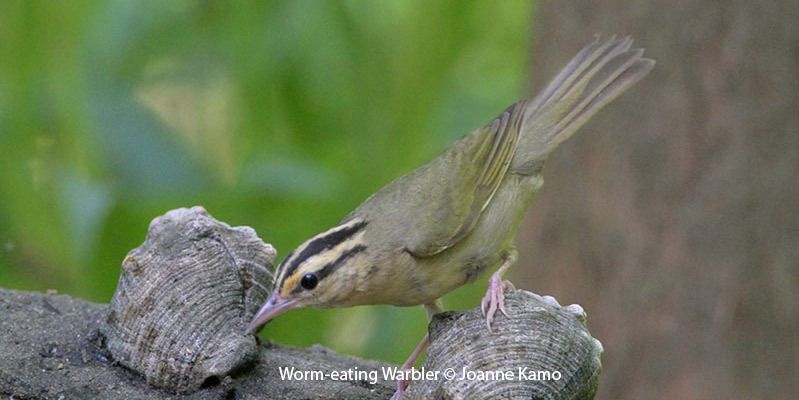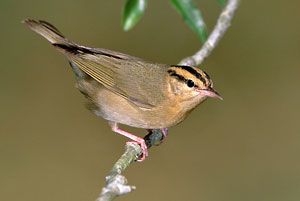
© Alan Murphy
Worm-eating Warbler
Helmitheros vermivorum
Family: (Parulidae) Wood-Warblers
Preferred Habitat: Forests
Seasonal Occurrence: Common late March through late April.
Profile by Vicki Stittleburg: A subtly attractive species, the Worm-eating Warbler has a buffy head and buffy underparts. It has bold, black crown stripes and a stripe through the eye. Named for its fondness for caterpillars (worms), this bird also consumes spiders and slugs. The Worm-eating Warbler is the only Texas-breeding warbler that nests on the ground. The female builds a cup nest of decaying leaves lined with grass, moss, plant stems and hair. The nest is hidden under leaf litter and constructed on a hillside or ravine bank, often near water. During incubation, the female becomes completely still on her nest, relying on her striped crown for concealment. If she is flushed, she will flutter across the ground with her wings and tail spread, acting helpless to lure predators away from her nest or fledglings.
Though common in Houston during spring migration, this well camouflaged warbler can be difficult to spot as it prefers to remain in the understory in dense thickets and woodlands. The song of the Worm-eating Warbler is a rapid, dry trill, often insect-like.
Comments by Don Verser: Worm-eating Warblers sometime give a thin call note, similar to that of Black-and-white, when moving around in the woods.
Profile by Carrie Chapin: One member of the great menagerie of warblers to visit the Texas coast during spring migration is the secretive Worm-eating Warbler. Previously placed in the same genus as Swainson’s Warbler, this small passerine frequents forest understories and can be difficult to find in the dense shrubs and vegetation it prefers. Its name refers to the many species of caterpillars it consumes (though most warblers eat plenty of caterpillars too). Both sexes of Worm-eating Warblers can be identified by their prominent black streaks on an orange head with a long, pointed bill. The wings are dull olive and lack wingbars, and the breast is unmarked. Following their insect-like trill (similar to that of a Chipping Sparrow) or sharp tseet call is the most reliable method of locating hidden individuals.
Worm-eating Warblers breed in the eastern and central United States and overwinter in Mexico, Central America, and the Caribbean. They prefer to nest in dense, large stands of trees with lots of understory vegetation. The nest is a simple open cup placed on the ground and hidden by dead leaves and vegetation. After the nest is constructed by the female, she lays between four and six eggs and incubates them for eleven to seventeen days. Both parents feed the offspring, and the male defends a large territory from thrushes and conspecifics. After ten days, the young leave the nest and the male stops defending the territory.
Worm-eating Warblers are sensitive to habitat fragmentation and need over 52 acres of forest to nest. Nests placed along the edges or in fragmented habitats are frequently parasitized by Brown-headed Cowbirds. Unfortunately, insecticides used to control spongy moths can cause a decline in their populations. Interestingly, Worm-eating Warblers appear tolerant of clear-cutting and may move back into a nest three years after a disturbance. As with many other nocturnally migrating bird species, Worm-eating Warblers face additional mortality from window strikes and feral cats.
This species migrates across the Texas coast from late March through early May. Some of the bests spots to catch a glimpse are in the Smith Oaks or Boy Scout Woods Sanctuaries in High Island, Texas, or in the Edith L. Moore Nature Sanctuary in Houston. Be sure to identify this small bird in the bushes, you might be pleasantly surprised!
-
Cornell Lab of Ornithology
-
Field Guide
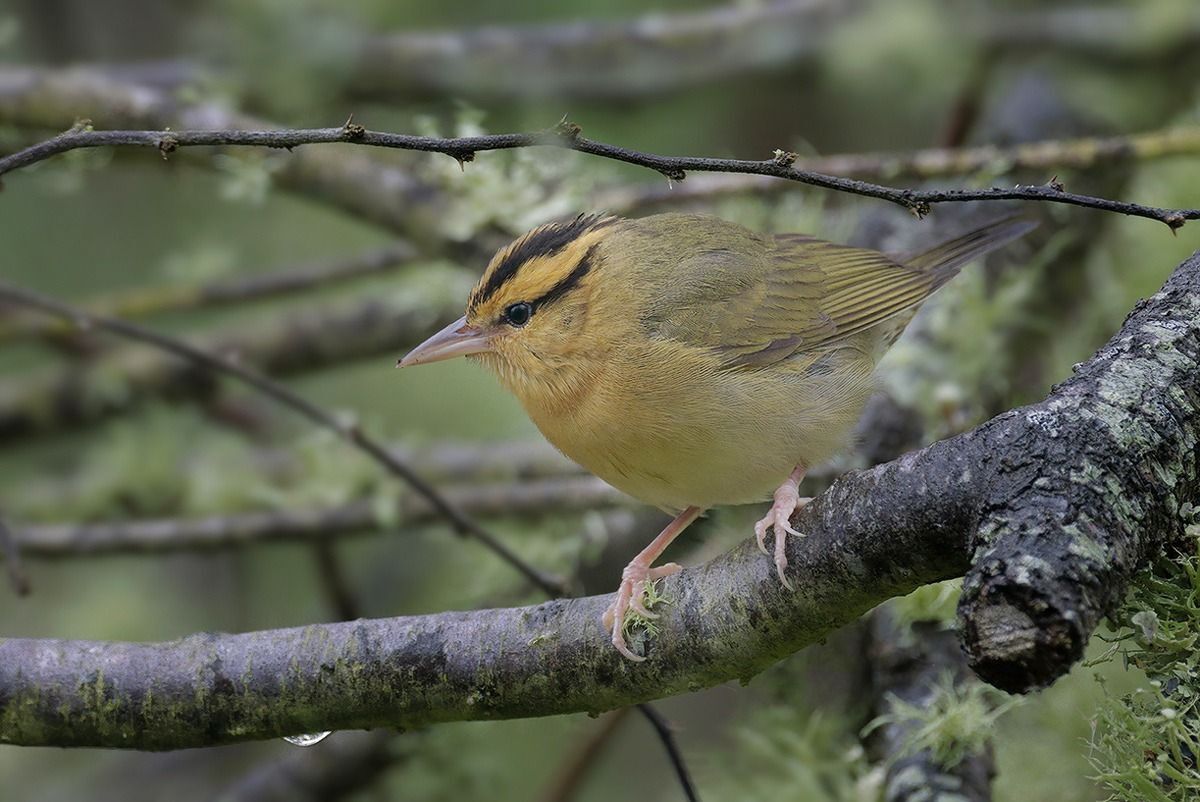
© Greg Lavaty, www.texastargetbirds.com
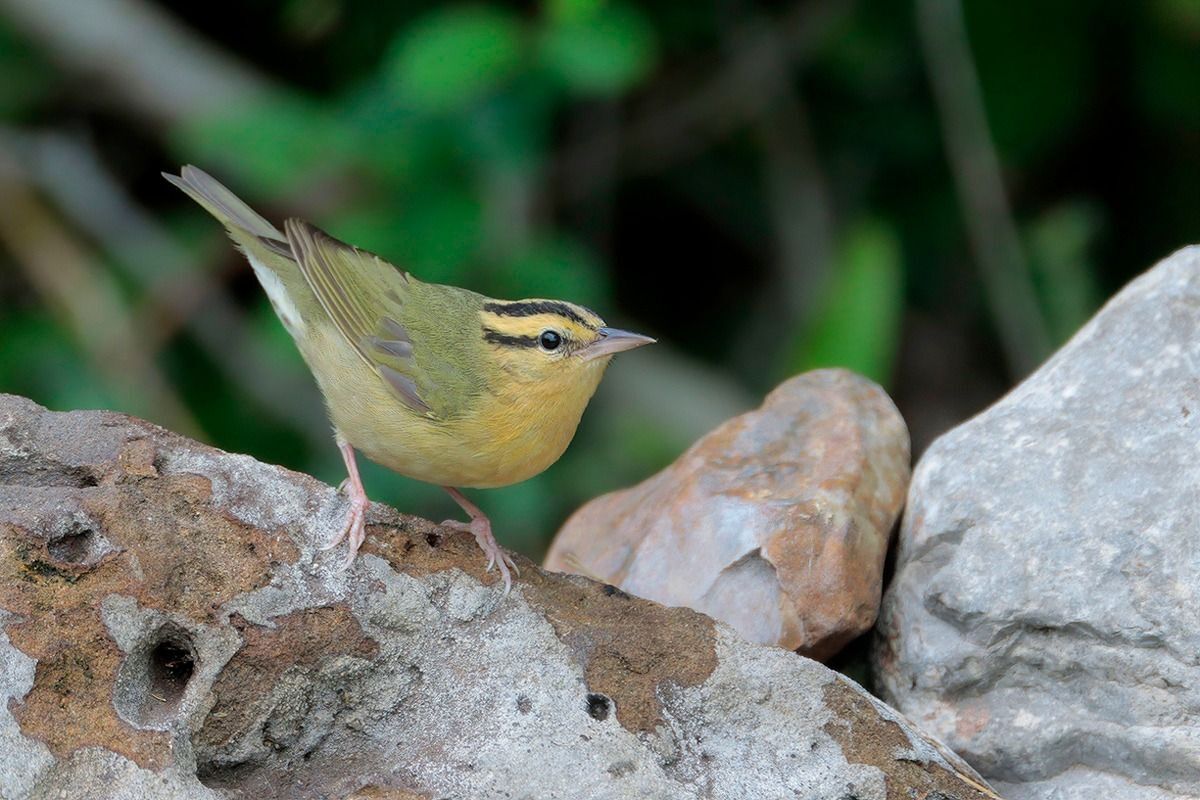
© Greg Lavaty, www.texastargetbirds.com
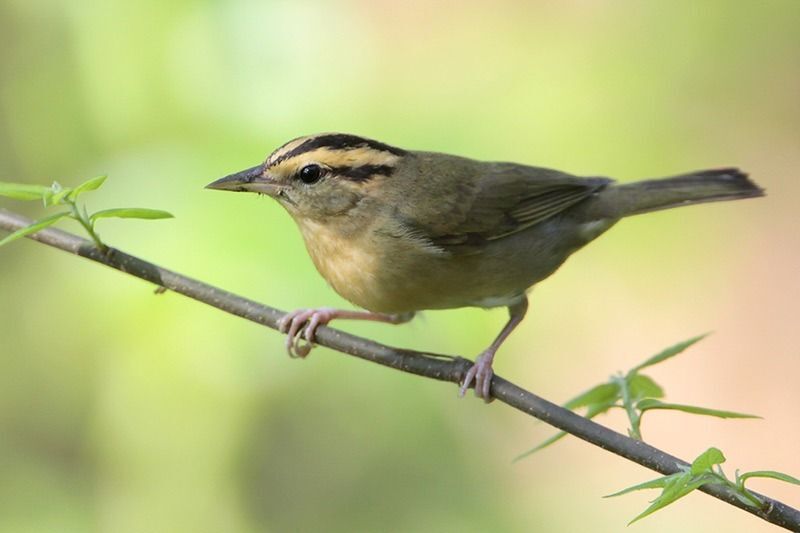
© Greg Lavaty, www.texastargetbirds.com
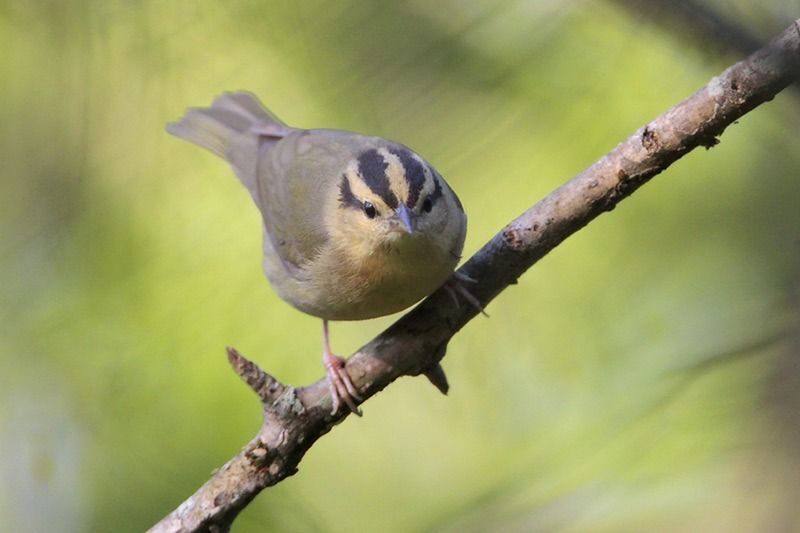
© Greg Lavaty, www.texastargetbirds.com

